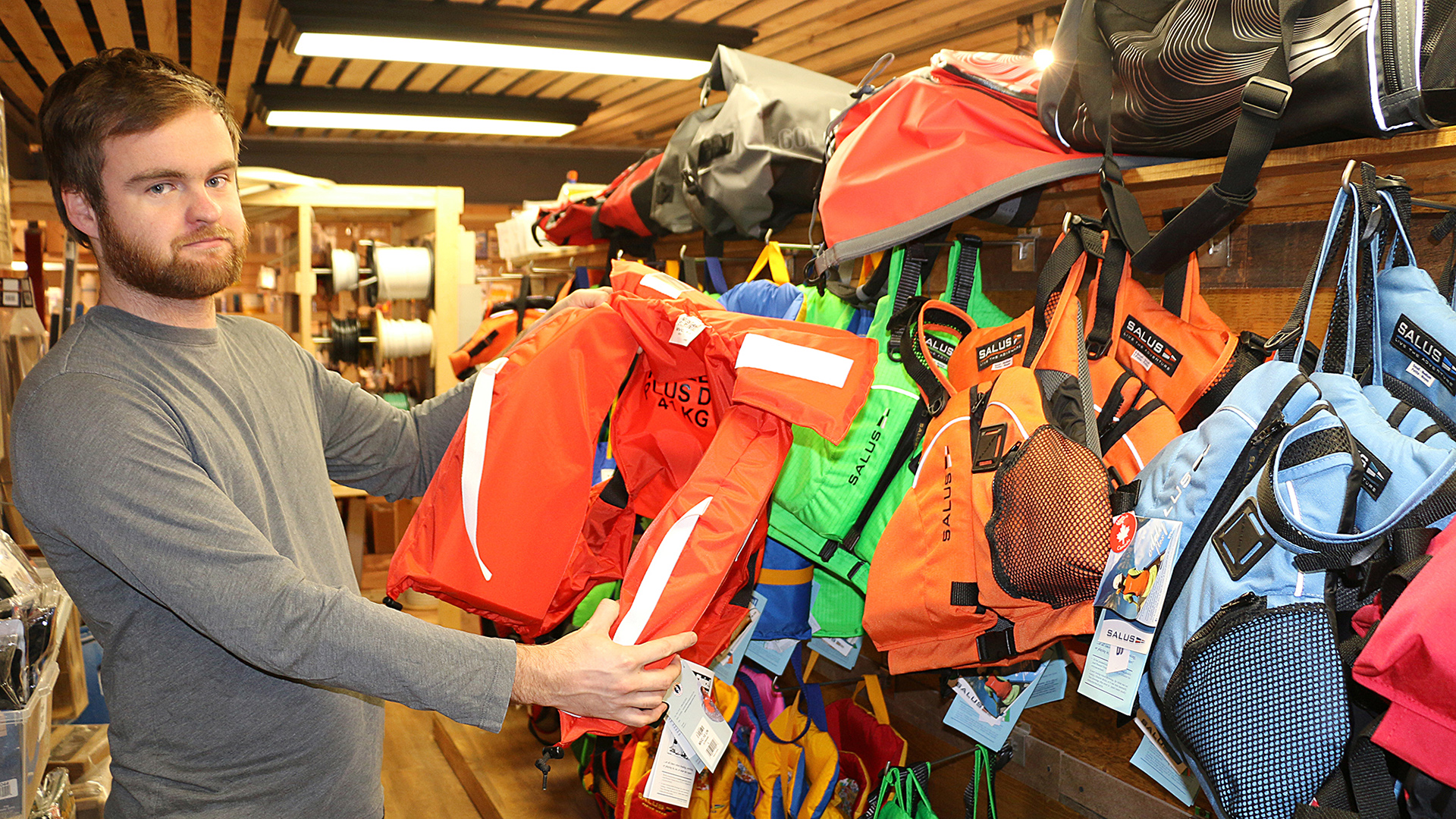Lifejacket selection is best made with full knowledge.
Is it time for Transport Canada to change its game in the lifejacket recommendation department? Perhaps Canadian regulations and information should match that which is available in the United States.
Boating courses and the Transport Canada Safe Boating Guide advise us to select a lifejacket or PFD appropriate to the activity we are undertaking.
For example, you won’t want to wear a full keyhole jacket kayaking or canoeing. Likewise a full SOLAS (Safety of Life at Sea) lifejacket may not be the best selection for some on-the-water activities either.
The Safe Boating Guide notes that Lifejackets and PFDs are not the same! It says: Note the differences and choose the right one. Then in chart form it describes the three types approved for use in Canada; SOLAS, Standard and Small Vessel, and then notes their ability to turn you face up in the water.
But, there are several styles and types of lifejackets on the market and one looks similar to another. Is telling new and even experienced boaters to pick what is best for their activity without any other information leaving too much to the imagination of the user? As long as a jacket or PFD has the approved stamp in it, isn’t it good enough?
Across the border in the United States, if you are looking for lifejacket information you will be treated to a full description of the various options and under what circumstances they should be, or could be, used. They categorize their life jackets not with words, but by type and it is easy to see and read what you are searching for when you get to the marine store.
Let’s face it: most people look for bargains in everything they purchase. While the most knowledgeable people work at marinas and marine outfitters, there are a lot of lifejackets flying out the front doors of many big box and automotive stores in Canada where the staff may not possess an in-depth knowledge about the products on the racks, especially when it comes to life-jackets.
So how do we best equip ourselves in our search for the perfect life-jacket?
The easiest method for the time being at least, is to understand the Canadian regulations and then take a look at the information available from the US Coast Guard. They describe five types of life-jackets and life-saving devices identified as Type I through V.
Type I is equivalent to our SOLAS device. It comes in several styles, from a style that you put on like a jacket to the key-hole style that you pull over your head. Here is what the Safe Boating Guide says about the SOLAS style: “Best performance: This lifejacket will turn you on your back in seconds to keep your face out of the water, even if you are unconscious. Available in 2 sizes: Over 32 kg (70 lbs) Less than 32 kg (70 lbs) Keyhole”
Here is how the US Coast Guard describes this Type 1: “Intended Use: When cruising, racing and fishing offshore, or when boating alone, or in stormy conditions. Minimum Buoyancy: 22 lbs. for adults. (11 lbs. for child size) Additional Information: Best for open, rough or remote water where rescue may be slow to arrive. Will turn most unconscious wearers face-up in water. Offers the best protection, but is somewhat bulky and uncomfortable. Does the best job of retaining body heat, as it has additional foam and fabric, and keeps your head higher above water.” And then it advises: “Currently, there aren’t any Coast Guard approved Type I inflatable PFD’s available to the general public.”
As well as a more detailed description and recommended use, it clearly notes that the PFD you might be looking at is not a Type 1 life jacket. So if you are doing some serious cruising, you should not be shopping at department stores with marine sections.
There is a similar description under all the five types.
For example, Type II is equivalent to our Standard life jacket and Type III is similar to our Small Vessel style. Again for comparison, here is what Transport Canada says about the Standard jacket. “Slower performance: This lifejacket will turn you on your back to keep your face out of the water, even if you are unconscious. Available in two sizes: Over 40 kg (88 lbs). Less than 40 kg (88 lbs). Keyhole.”
And the US Coast Guard says: “Intended Use: Inland day cruising, fishing and sailing. Good for boating in light craft. Minimum Buoyancy: 15.5 lbs. for adult size. Additional Information: Good for protected, inland water near shore, where chances of immediate rescue is good. Not suitable for extended survival in rough water. Will turn some unconscious wearers face-up in water. Poor performer in rough water, often requires you to tread water in order to keep your head above water. More comfortable but less buoyant than Type I. Provides far less flotation than a Type I.”
Canada, The United States and other countries, have adopted a large number of standards in common. In fact, in small boat construction and automobile construction, Canadian regulations are often in lock-step with other countries.
For maximum clarification it seems to make sense that Canadians would be provided with as much detail as possible about their selection of one of their most important pieces of safety equipment.
Until that day though, it is important to read and understand the Canadian regulations and then if you need some clarification before you go shopping, stop by the US Coast Guard web site as well. Then visit a sales outlet with knowledgeable staff.
By Mark King

